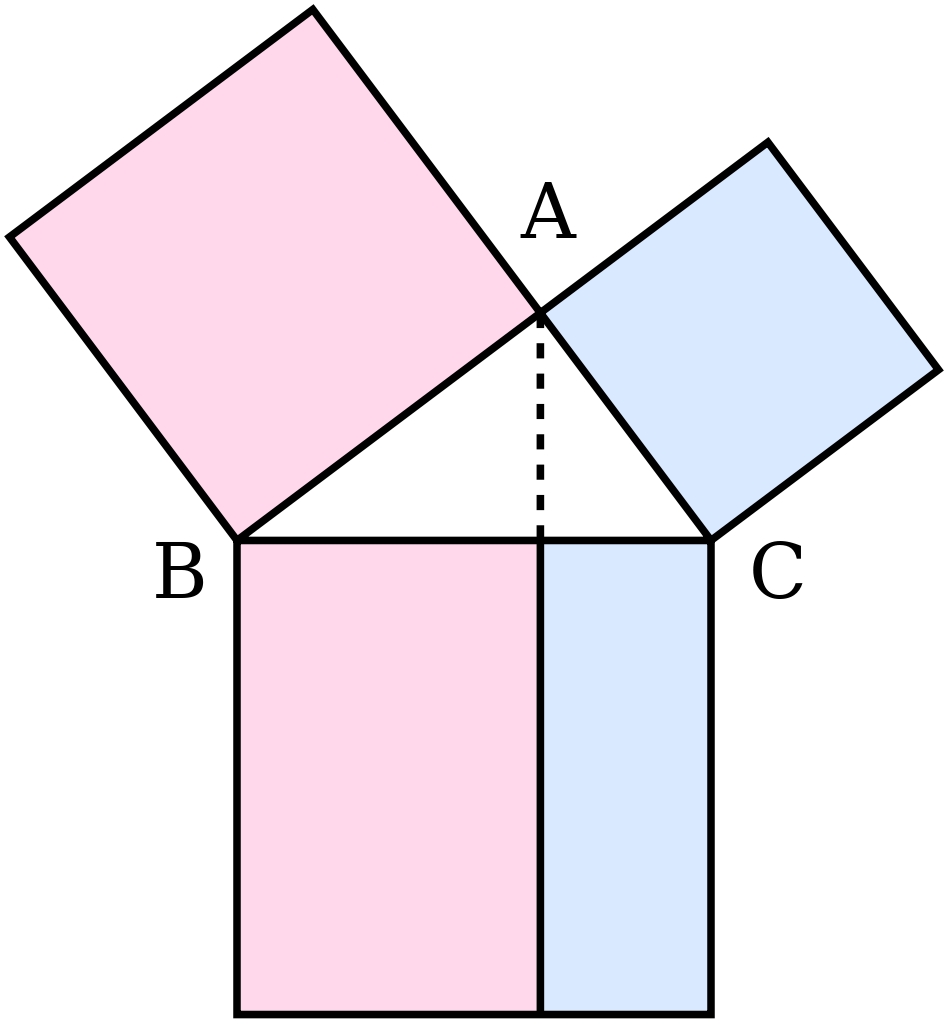Advertisement
What is Euclid’s Theorem for triangles? The proof of Euclid’s theorem and examples.

Euclid’s Theorem;
We have similar triangles:
- ΔABC ∼ ΔDBA ∼ ΔDAC
and we have also found two of Euclid’s theorems using similar triangles.
- c²=ap and b²=ak
We call these statements Euclid’s right side theorems.
Advertisement
Here are Euclid’s other theorems on right angled triangles :
- ΔDBA ∼ ΔDAC
We call this statement Euclid’s altitude theorem.
- We also have
- Now
- so
- A more simple way of finding this last formula is to look at the area of ΔABC in two different ways.
- If we take [BC] as the base then [AD] is the altitude.
So the area of ΔABC is :
- If we take [AC] as the base then [AB] is the altitude. So the area of ΔABC is :
- Here are the formulas for Euclid’s theorems put together:
- Notice that if we write these formulas in the forms :
then :
- c is the mean proportional between a and p
- b is the mean proportional between a and k
- h is the mean proportional between p and k
- h is the fourth proportional to a, b and c